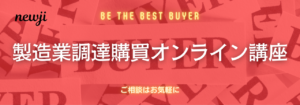- お役立ち記事
- Relationship between paper absorption control and digital printability

Relationship between paper absorption control and digital printability

目次
Introduction
In the ever-evolving world of printing technology, the relationship between paper absorption control and digital printability plays a crucial role.
As businesses, artists, and individuals rely more on digital printing for efficiency and precision, understanding how paper absorbs ink can significantly impact the quality of printed materials.
Let’s delve into this fascinating subject to understand how these factors interact and influence each other.
Understanding Paper Absorption Control
Paper absorption control refers to the paper’s ability to absorb ink or toner during the printing process.
It is an essential factor that determines the final look of a print.
If a paper absorbs too much ink, the print can look dull and blurry.
Conversely, if it absorbs too little, the print might not adhere properly, leading to smudging or fading.
Factors Affecting Paper Absorption
Several factors determine how a paper absorbs ink:
1. **Paper Composition**: The materials used in paper production, such as wood pulp, cellulose fibers, or recycled content, influence its absorbency.
2. **Coating**: Some papers are coated to reduce absorbency, creating a smoother surface for printing and enhancing ink or toner adhesion.
3. **Thickness and Porosity**: Thicker or more porous papers tend to absorb ink more due to their capacity to contain more ink particles.
4. **Moisture Content**: The amount of moisture in the paper can affect its absorption rate, which in turn affects the drying time of ink.
The Importance of Digital Printability
Digital printability refers to the effectiveness and quality of digital printing on different paper types.
In digital printing, where efficiency and high-quality output are paramount, controlling paper absorption is essential.
Achieving Optimal Print Quality
For optimal print quality, it is vital to balance the ink absorption rate to ensure the colors are vivid and details are sharp.
– **Color Fidelity**: A well-controlled absorption rate ensures that colors remain vibrant and true to the intended design.
– **Image Resolution**: Proper absorption helps maintain high resolution, keeping images crisp and clear.
– **Text Clarity**: The right balance can prevent smudging, ensuring text remains legible and sharp.
Techniques for Controlling Absorption
To achieve ideal digital printability, certain techniques are employed to control paper absorption:
Paper Coating
Coated papers are often used in digital printing to control ink absorption.
The coating provides a barrier that prevents excessive absorption, ensuring ink stays on top of the paper, resulting in sharper images and text.
Surface Sizing
This process involves treating the surface of the paper with specific chemicals to adjust its absorption properties.
Sizing papers can make them less porous, offering better print quality, especially in high-volume or high-resolution print jobs.
Using Specialty Papers
Manufacturers offer specialty papers specifically designed for digital printing.
These papers have properties tailored to digital printing needs, such as controlled porosity and compatibility with ink types.
Balancing the Relationship
To maximize the benefits of digital printing, it’s crucial to find the right balance between paper absorption control and printability.
Here are some best practices:
Choosing the Right Paper
Selecting the appropriate paper for your specific digital printing task is a critical first step.
Know your printing needs, such as image quality, resolution, and the type of ink you are using, to make an informed choice.
Adjusting Printer Settings
Customizing your printer settings to match the paper’s properties can aid in achieving the desired print quality.
Most modern printers allow adjustments for different paper types to ensure the highest quality output.
Testing and Trial Runs
Before committing to large print runs, conduct small tests to see how the chosen paper interacts with the printer and ink.
This testing can help identify potential issues with absorption or printability, allowing adjustments before full-scale printing.
Conclusion
Understanding the relationship between paper absorption control and digital printability is essential in producing superior digital prints.
This knowledge enables better decision-making in paper selection and printer settings, ensuring that both professionals and hobbyists achieve the best possible print quality.
As digital printing technology continues to advance, staying informed about these factors will allow for greater creativity and efficiency in printed designs.
 資料ダウンロード
資料ダウンロード
QCD管理受発注クラウド「newji」は、受発注部門で必要なQCD管理全てを備えた、現場特化型兼クラウド型の今世紀最高の受発注管理システムとなります。
 NEWJI DX
NEWJI DX
製造業に特化したデジタルトランスフォーメーション(DX)の実現を目指す請負開発型のコンサルティングサービスです。AI、iPaaS、および先端の技術を駆使して、製造プロセスの効率化、業務効率化、チームワーク強化、コスト削減、品質向上を実現します。このサービスは、製造業の課題を深く理解し、それに対する最適なデジタルソリューションを提供することで、企業が持続的な成長とイノベーションを達成できるようサポートします。
 製造業ニュース解説
製造業ニュース解説
製造業、主に購買・調達部門にお勤めの方々に向けた情報を配信しております。
新任の方やベテランの方、管理職を対象とした幅広いコンテンツをご用意しております。
 お問い合わせ
お問い合わせ
コストダウンが利益に直結する術だと理解していても、なかなか前に進めることができない状況。そんな時は、newjiのコストダウン自動化機能で大きく利益貢献しよう!
(β版非公開)






